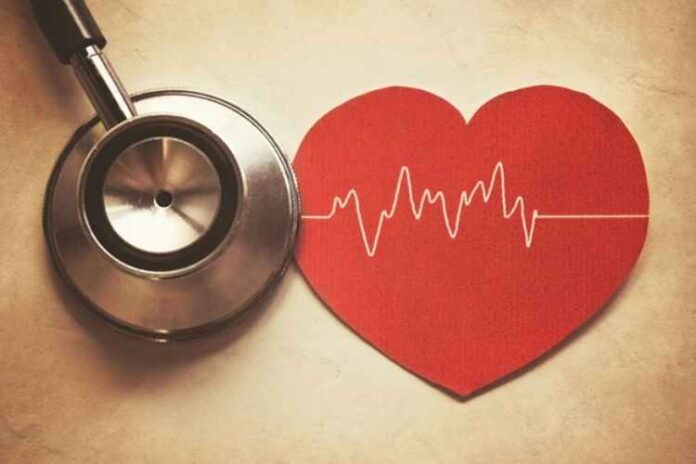Did you know that 18.2 million people over the age of twenty have CVD? Cardiovascular disease is one of the leading causes of death in the United States.
Despite this fact, many people are unaware of how certain lifestyle decisions can contribute to cardiovascular disease. But, with a few simple changes in the day-to-day routine, you can begin to prioritize CVD prevention.
In this article, we’ll show you how by going over a variety of ways that you can preserve your heart health for years to come. Let’s get started!
Stay Active
Physical activity is a great way to protect against heart disease. When you work out you both keep your weight at a healthy level and put less strain on your heart.
Ideally, you should be doing between thirty minutes to an hour of physical activity each day. But, you may need to work your way up to this amount. Start slowly.
Five minutes might not be much, but it’s better than nothing. And don’t be discouraged if you can’t do it right away. Find new and engaging ways to get your physical activity.
For example, you can try gardening, walking the dog, cleaning, or taking the stairs. All of these count as physical activity!
Eat a Diet That Promotes Heart Health
Certain foods promote heart health and others that don’t. You need to find a balance between these two food groups in your diet. Good foods include things that are high-fiber and low fat. It should consist of things like:
- Fruit
- Vegetables
- Beans
- Legumes
- Fish
- Lean meats
- Low-fat dairy foods
- Whole grains
- Olive oil
Meanwhile, you should avoid or limit your intake of things like salt, sugar, processed carbs, alcohol, and saturated fats. And, a word about fats. There are two types of fats: saturated and unsaturated.
Saturated fats, like butter, cheese, and fatty meats, are bad because they increase cholesterol levels. However, unsaturated fats, like avocados, nuts and seeds olive oil, and fish oil, are all good for you.
That’s because they contain good cholesterol that reduces blocking in your arteries.
Quit Smoking
If you’re a smoker, then this advice can be easier said than done. But, it’s important to remember that quitting smoking is one of the best things that you can do for your heart.
The chemicals found in cigarettes can severely both your heart and blood vessels. And, the smoke that you inhale decreases the amount of oxygen found in your blood.
This leads to high blood pressure because your heart needs to work harder to get oxygen into your blood. However, there’s good news. If you quit smoking today, then by tomorrow your risk of heart disease is already lower.
If you hold out for a year, that risk drops to half of that of a regular tobacco smoker. So, it’s never too late to try quitting.
Try to Reach a Healthy Weight
Weight can be a touchy subject. That’s because a healthy weight can be different for everyone.
However, it’s proven that excess weight around the middle of the body can lead to higher cholesterol, higher blood pressure, and a higher likelihood of Type II diabetes. So, what’s an ideal weight?
Experts usually say less than a forty-inch waist measurement for men and thirty-five inches for women.
Don’t think you need to lose fifty or more pounds to reach a healthy weight. Often reducing your weight by 3% is all that it takes to see a health benefit in your life.
Get Enough Sleep
Most adults need at least seven hours of sleep each night. If you aren’t getting that amount, you have a much higher chance of getting the following conditions:
- High cholesterol levels
- Obesity
- High blood pressure
- Depression
- Higher risk of heart attacks
So make sure that you try and follow a general sleeping pattern. You should also keep your bedroom nice and dark so you stay asleep.
If you get the amount of recommended sleep, but you’re still tired, consider seeing your doctor. You may have sleep apnea which can increase your risk of CVD. But, you can often treat this condition with a CPAP device.
Go to Health Screenings Regularly
High blood pressure and high cholesterol are two of the main things that damage the heart and blood vessels. As such, if you have either of these things symptoms, then you need to make changes quickly.
The best way to find out if you have these conditions is to go to regular health screenings. Let’s start with blood pressure. Starting at the age of eighteen, you should be getting your blood pressure check out at least once every two years.
If you have a certain risk factor, increase that to once a year. Next, is your cholesterol levels. You should usually get these screened every four to six years. If you have high blood pressure or cholesterol level, you should check for additional conditions.
For example, you may need to get PAD evaluations (peripheral artery disease) or a Type II diabetes evaluation. Just make sure to follow any advice your doctor recommends.
Enjoy Learning About CVD Prevention? Keep Reading
We hope this article helped you learn more about CVD prevention. It’s important to remember all of the things you can do the slow the delay of cardiovascular disease.
But, remember that it doesn’t help to obsess over it. This will just lead to stress, which ultimately worsens the heart of your health. So, find a balance that works for you.
Make basic activities, like daily exercise and healthy eating, a part of your routine. That way you can preserve your heart health without constantly thinking about it.
Do you not want this article to end? We don’t blame you. Luckily, there are hundreds more that you can check out by continuing to explore our site. So, get started!


























